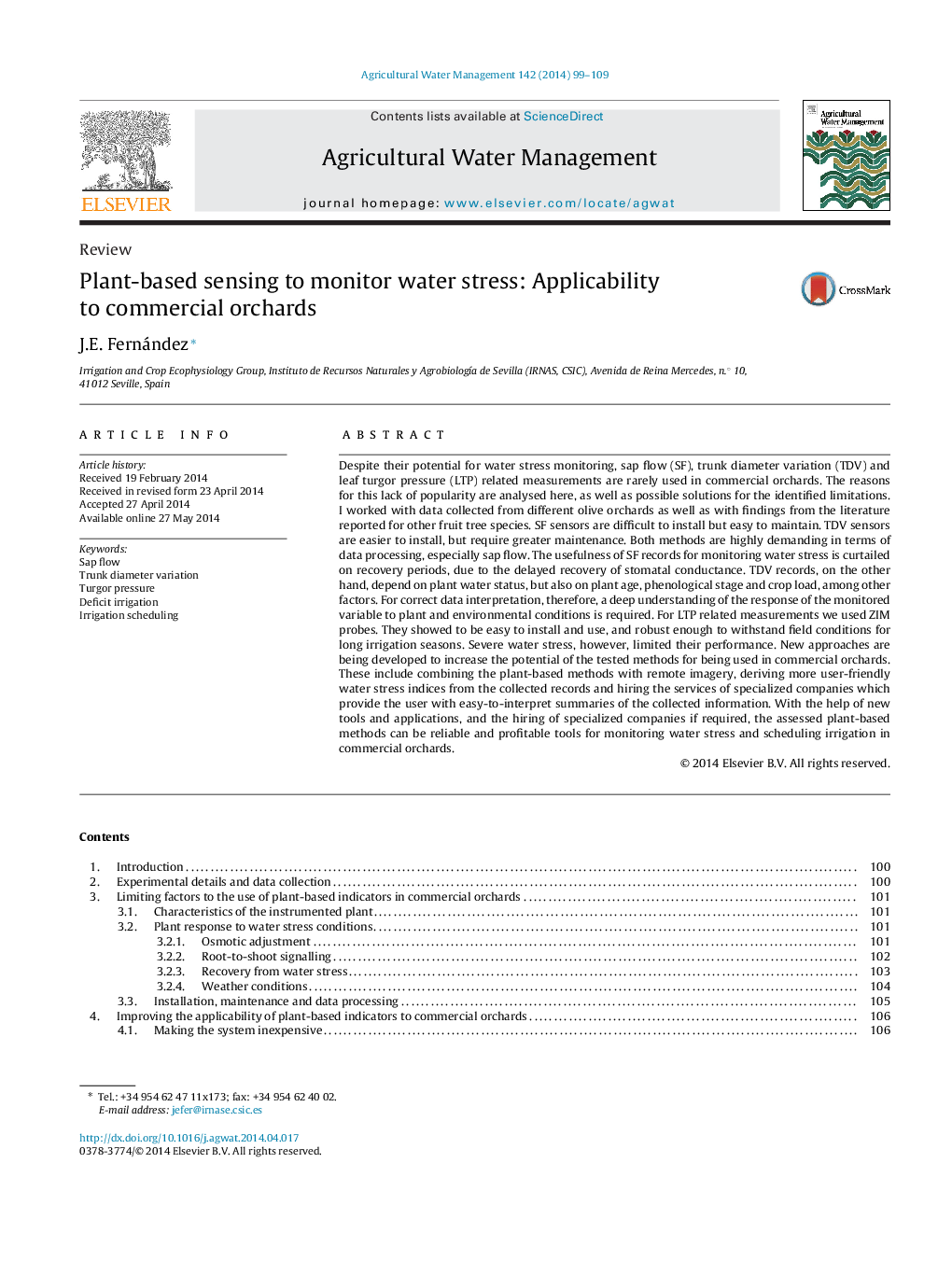| کد مقاله | کد نشریه | سال انتشار | مقاله انگلیسی | نسخه تمام متن |
|---|---|---|---|---|
| 4478599 | 1622937 | 2014 | 11 صفحه PDF | دانلود رایگان |
• Sap flow, trunk diameter variation and leaf turgor pressure indicate water stress.
• However, methods based on these variables are rarely used in commercial orchards.
• Installation, maintenance and data interpretation requirements for the three methods are analysed.
• New approaches for these methods being more user-friendly are also reviewed.
• If combined with those approaches the methods seem suitable for commercial orchards.
Despite their potential for water stress monitoring, sap flow (SF), trunk diameter variation (TDV) and leaf turgor pressure (LTP) related measurements are rarely used in commercial orchards. The reasons for this lack of popularity are analysed here, as well as possible solutions for the identified limitations. I worked with data collected from different olive orchards as well as with findings from the literature reported for other fruit tree species. SF sensors are difficult to install but easy to maintain. TDV sensors are easier to install, but require greater maintenance. Both methods are highly demanding in terms of data processing, especially sap flow. The usefulness of SF records for monitoring water stress is curtailed on recovery periods, due to the delayed recovery of stomatal conductance. TDV records, on the other hand, depend on plant water status, but also on plant age, phenological stage and crop load, among other factors. For correct data interpretation, therefore, a deep understanding of the response of the monitored variable to plant and environmental conditions is required. For LTP related measurements we used ZIM probes. They showed to be easy to install and use, and robust enough to withstand field conditions for long irrigation seasons. Severe water stress, however, limited their performance. New approaches are being developed to increase the potential of the tested methods for being used in commercial orchards. These include combining the plant-based methods with remote imagery, deriving more user-friendly water stress indices from the collected records and hiring the services of specialized companies which provide the user with easy-to-interpret summaries of the collected information. With the help of new tools and applications, and the hiring of specialized companies if required, the assessed plant-based methods can be reliable and profitable tools for monitoring water stress and scheduling irrigation in commercial orchards.
Journal: Agricultural Water Management - Volume 142, August 2014, Pages 99–109
